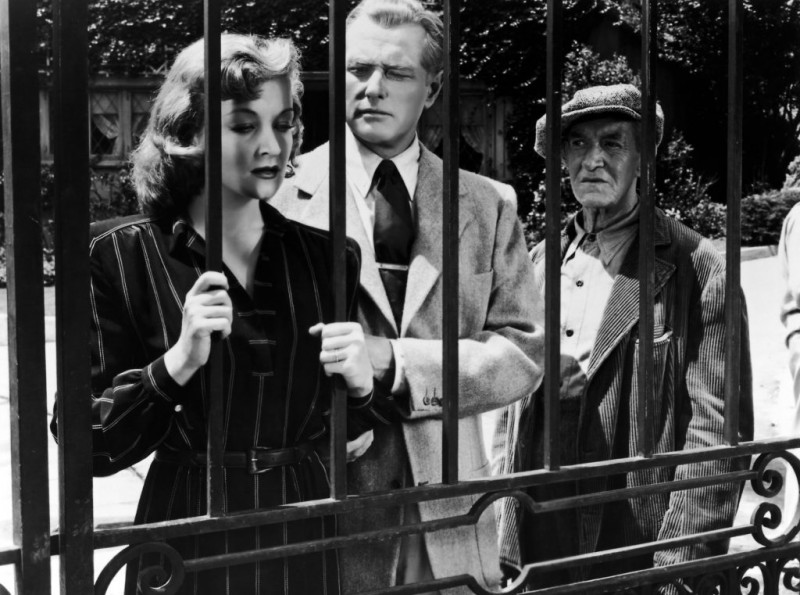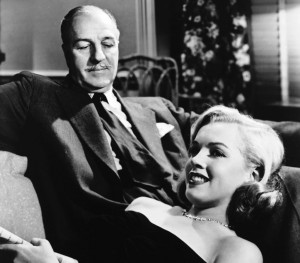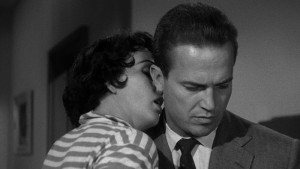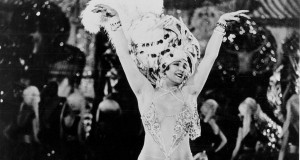My Name is Julia Ross Jonathan Bygraves

Share this
The final film in our film noir season was an unusual mystery-melodrama directed by Joseph H Lewis.
When one thinks of film noir, several key connotations might immediately spring to mind: a hard-boiled private eye, a sultry femme fatale, and perhaps also the American city – the asphalt jungle which serves not merely as a passive backdrop but as the very active catalyst of the moral corruption of its inhabitants.
The city may seem as defining a constituent of noir as the rugged American West is to the Western, but as the critic Imogen Sara Smith details in her book In Lonely Places: Film Noir Beyond the City, it is far from essential. Think, for instance, of the desert highways of Detour and The Hitch-Hiker, the snowbound wilderness of On Dangerous Ground, or the open road, the spaces between places, of Gun Crazy and They Live By Night – each in their own way illustrating that though its protagonists might escape their urban traps, their psychological scars remain ever-present.
My Name is Julia Ross, originally released in 1945, is one such example of this. It begins in fairly conventional noir fashion – indeed the opening shot of its eponymous lead’s high heels clacking across a rain-sodden city street feels like one of the quintessential noir images. We begin in London, albeit a London constructed on the backlot of Columbia Pictures Studios in Hollywood, but the action soon shifts to a very different setting: an exoticised Cornish cliff-side mansion, intentionally reminiscent of the Manderley of Daphne Du Maurier’s Rebecca.
The film’s fusion of noir and the Gothic places it in close proximity to a sub-genre which had flourished during the war years. Alfred Hitchcock’s adaptation of Rebecca, which had been released five years earlier, was one of a number of Gothic melodramas released during the early 1940s, films targeted primarily at female viewers who were increasingly being viewed as the primary cinema-going demographic during wartime. By the middle of the decade, the Gothic and the noir had begun to overlap, in films with contemporary settings such as Spellbound and Fritz Lang’s The Secret Beyond the Door.
The contrast in Julia Ross between its urban and other-ed countryside location underlines the axis around which the main plotline of the film hinges, namely the attempted gaslighting of a young woman into believing her identity is not as she remembers it being. For a female audience in America in 1945, this might have carried with it metaphorical weight: with the end of the war approaching, so too was it widely assumed that women would be expected to return to traditional domestic roles after having been encouraged to undertake jobs which they had previously been excluded from. Was this its own form of mass gaslighting?
The theme of the removal and replacement of a woman’s identity and agency comes from the film’s source novel, The Woman in Red, written by Lucy Beatrice Malleson under her pen name of Anthony Gilbert, which was originally published in 1941. It was one of the 51 novels of hers which featured her most famous creation, eccentric lawyer-cum-detective Arthur Crook – however the script, written by Muriel Roy Bolton, disposes completely of the Crook character and focuses instead on Julia Ross herself, placing the focus of the film on her own quest to restore her agency.
The film would be the breakthrough work for its director Joseph H. Lewis, now best known as the cult director behind the frenzied canonical noirs Gun Crazy and The Big Combo. Lewis had been toiling on Poverty Row for the previous decade, where he had acquired the sarcastic nickname ‘Wagon Wheel Joe’ for his propensity to frame certain shots through the spokes of a wagon wheel – when asked about it, he said that he used this device to distract from both the poor dialogue and poor acting which was happening on-screen. In Julia Ross, as with his later noirs, the at-times daring visual style on display is evidently a carry-over from these formative years working on much lower budget productions.
The film’s fine supporting cast includes George Macready as the villainous husband, an actor described by critic Doug McClellan as ‘Columbia’s all-purpose degenerate of the ’40s’, and who will be more familiar to viewers for his role opposite Rita Hayworth in Charles Vidor’s 1946 noir Gilda. Dame May Whitty, who plays his mother, seems something of a specialist in dark melodramas about dodgy husbands, appearing in both Suspicion and the 1944 version of Gaslight, but is best remembered today for her role as Miss Froy, the lady who vanishes in The Lady Vanishes.
But really this film belongs to Julia Ross herself, played by Nina Foch. Foch would go on to have a prolific career on both the big screen and television, though she never quite become the major star that her talents suggested she might. Nevertheless, she appeared in films such as An American in Paris and Cecil B De Mille’s The Ten Commandments, and gave an Oscar-nominated supporting performance in Executive Suite in 1954. She would later become a teacher at both the American Film Institute and the University of Southern California, where her Directing the Actor class became hugely influential, helping cultivate the careers of the likes of Amy Heckerling and John Singleton. It is here, alongside her performance as the resourceful heroine of My Name is Julia Ross, that her quietly remarkable legacy lies.


